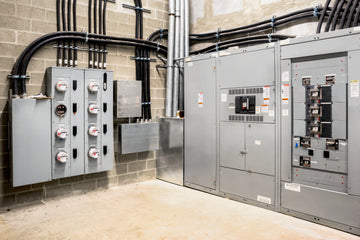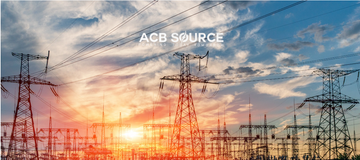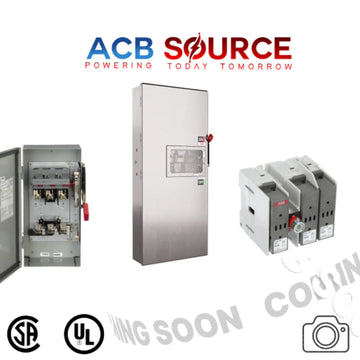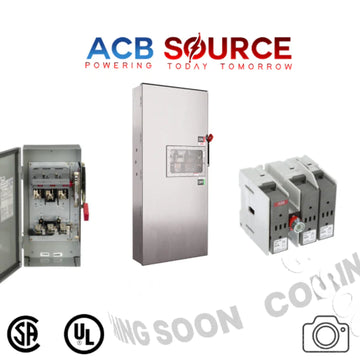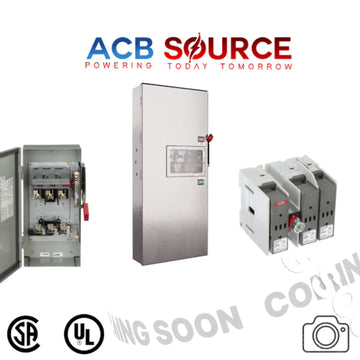Medium voltage switchgear is a critical component in electrical power distribution systems, playing a vital role in controlling, protecting, and isolating electrical equipment. Understanding the basics of medium voltage switchgear is essential for professionals in the electrical industry, as it ensures the reliable and safe operation of power systems. In this comprehensive guide, we'll explore the fundamental principles, components, and applications of medium voltage switchgear.
Understanding Medium Voltage Switchgear
What is Medium Voltage Switchgear?
Medium voltage switchgear is a crucial part of the electrical infrastructure that handles voltages ranging from 1 kV to 36 kV. It acts as a central hub for distributing electrical power to various loads, providing a means to control and protect the connected circuits. The term "switchgear" encompasses a range of devices, including switches, fuses, circuit breakers, and other protective devices.
Components of Medium Voltage Switchgear
- Circuit Breakers:
Circuit breakers are the primary protective devices in medium voltage switchgear. They are designed to interrupt or break the electrical current flow in case of a fault, preventing damage to equipment and ensuring the safety of the overall system. Medium voltage circuit breakers can be of various types, including air circuit breakers, vacuum circuit breakers, and SF6 circuit breakers.
- Switches:
Switches in medium voltage switchgear are used to control the flow of electrical power. They can be manually operated or automatically controlled, allowing for the isolation and connection of circuits. Switches are often employed in conjunction with circuit breakers to provide additional control functionality.
- Disconnectors (Isolators):
Disconnectors, or isolators, are devices used to isolate equipment from the power source for maintenance or repair. Unlike circuit breakers, disconnectors do not provide protection against overcurrent or short circuits. They are designed for load-breaking operations when the circuit is de-energized.
- Protective Relays:
Protective relays monitor the electrical parameters of the system and initiate the operation of circuit breakers or other protective devices in response to abnormal conditions. They play a crucial role in detecting faults and ensuring the rapid isolation of faulty circuits.
- Current Transformers (CTs) and Voltage Transformers (VTs):
CTs and VTs are instrument transformers used to measure current and voltage levels in the system. They provide input signals to protective relays and metering devices, enabling accurate monitoring and control of the medium voltage switchgear.
- Busbars:
Busbars are conductive bars or systems that carry electrical current within the switchgear. They serve as the main distribution paths, connecting various components such as circuit breakers, switches, and transformers.
- Earthing System:
The earthing system is essential for ensuring the safety of the medium voltage switchgear. It provides a low-resistance path for fault currents, facilitating the rapid operation of protective devices and minimizing the risk of electrical shock.
Operating Principles of Medium Voltage Switchgear
- Normal Operation:
During normal operation, medium voltage switchgear allows the flow of electrical power from the source to the connected loads. The switches and circuit breakers are in their closed positions, enabling the smooth distribution of power.
- Fault Conditions:
In the event of a fault, such as a short circuit or overcurrent, protective relays detect the abnormal conditions. The relays send signals to the circuit breakers, initiating their operation to interrupt the fault current and isolate the faulty section of the system.
- Maintenance and Isolation:
When maintenance or repair work is required on specific equipment or circuits, disconnectors or isolators are used to de-energize and isolate the equipment. This ensures the safety of personnel working on the system.
- Emergency Situations:
In emergency situations, such as a widespread power outage or the need for rapid disconnection, the medium voltage switchgear provides the means to manually or automatically disconnect the affected circuits, restoring stability to the electrical system.
Applications of Medium Voltage Switchgear
- Commercial Buildings:
Medium voltage switchgear is commonly used in commercial buildings to distribute power to various floors, sections, or tenants. It provides a centralized and efficient means of controlling electrical circuits for lighting, HVAC systems, and other building services.
- Industrial Facilities:
In industrial settings, medium voltage switchgear plays a critical role in powering and protecting machinery, production lines, and other essential equipment. The robust design and protective features of switchgear make it suitable for demanding industrial applications.
- Utilities and Power Plants:
Medium voltage switchgear is extensively utilized in utility substations and power plants for the distribution and control of electrical power. It ensures the reliable operation of transformers, generators, and other power generation and distribution equipment.
- Renewable Energy Installations:
With the increasing focus on renewable energy sources, medium voltage switchgear is integral in connecting and distributing power generated by solar farms, wind turbines, and other renewable energy installations.
- Transportation Infrastructure:
Medium voltage switchgear is employed in transportation infrastructure, including railway systems and airports. It facilitates the distribution of power for signaling, lighting, and other critical systems.
Advantages of Medium Voltage Switchgear
- Reliable Power Distribution:
Medium voltage switchgear ensures reliable and efficient power distribution, allowing for the seamless supply of electricity to various loads.
- Overcurrent and Fault Protection:
The inclusion of circuit breakers and protective relays in medium voltage switchgear provides effective overcurrent and fault protection, minimizing the risk of equipment damage and ensuring system reliability.
- Flexibility and Scalability:
Medium voltage switchgear offers flexibility and scalability, allowing for the easy expansion or modification of electrical systems to meet changing requirements.
- Enhanced Safety:
The incorporation of safety features, such as earthing systems and isolators, enhances the overall safety of medium voltage switchgear, protecting both personnel and equipment.
- Remote Monitoring and Control:
Advanced medium voltage switchgear often includes features for remote monitoring and control, enabling operators to monitor the status of the system and make adjustments from a central location.
Future Trends in Medium Voltage Switchgear
As technology continues to advance, several trends are emerging in medium voltage switchgear:
- Digitization and Smart Switchgear:
The integration of digital technologies is leading to the development of smart medium voltage switchgear. These systems incorporate sensors, communication devices, and data analytics to enable remote monitoring, predictive maintenance, and improved system performance.
- Environmental Sustainability:
Efforts are being made to design medium voltage switchgear with environmentally friendly materials and insulating gases, reducing the environmental impact of these systems.
- Integration with Renewable Energy:
With the increasing adoption of renewable energy sources, medium voltage switchgear is being adapted to seamlessly integrate with the fluctuating power outputs of solar and wind installations.
- Compact and Modular Designs:
Compact and modular designs are becoming more prevalent, allowing for easier installation, maintenance, and expansion of medium voltage switchgear systems.
Conclusion
In conclusion, having a comprehensive understanding of medium voltage switchgear is essential for professionals in the electrical industry and those involved in the design, installation, and maintenance of power distribution systems. From its fundamental components to its diverse applications, medium voltage switchgear plays a critical role in ensuring the reliability, safety, and efficiency of electrical systems.
As technology continues to evolve, the integration of digital solutions, environmental sustainability, and advancements in design will shape the future of medium voltage switchgear. Staying informed about these trends is crucial for professionals seeking to implement cutting-edge solutions and contribute to the continued improvement of electrical infrastructure around the world.

